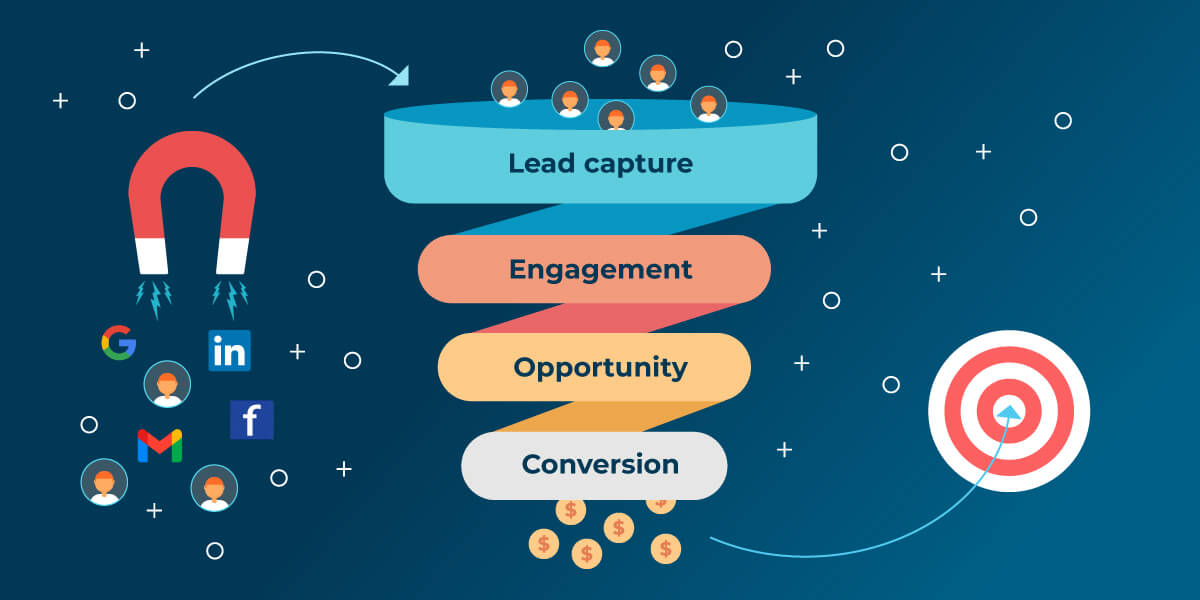Enhancing B2B Lead Generation: Strategic Approaches for 2024

Introduction
In the competitive world of B2B (Business-to-Business) marketing, lead generation stands as a crucial function, fueling the sales pipeline and ultimately driving revenue growth. Effective B2B lead generation involves identifying potential clients and cultivating interest in your products or services through a variety of strategic approaches. This guide will explore innovative strategies and best practices for maximizing B2B lead generation efforts in today’s digital landscape.
Understanding B2B Lead Generation
What is B2B Lead Generation?
B2B lead generation is the process of identifying the ideal customers for your business and systematically attracting them to provide their information, which can later be used to nurture and convert them into paying customers. Unlike B2C (Business-to-Consumer) lead generation, B2B focuses on building long-term relationships and often involves more complex, solution-based selling strategies.
Significance in the Sales Process
Lead generation is often the first step in the sales process, where potential leads are identified, contacted, and engaged with the goal of increasing the quality and quantity of business opportunities. In the B2B context, the effectiveness of lead generation efforts is directly correlated with business growth and success.
Key Strategies for Effective B2B Lead Generation
1. Content Marketing
Leveraging high-quality, targeted content is essential for attracting and engaging potential B2B clients. Content marketing helps establish your brand as a thought leader and trusted advisor in your industry.
Effective Content Strategies:
- Educational Content: Produce in-depth articles, whitepapers, and case studies that address specific industry challenges or questions.
- Webinars and Workshops: Host online sessions that provide valuable insights while capturing the contact details of attendees.
- Blogging: Maintain a regular blog that covers topical and relevant issues, optimizing for SEO to attract organic traffic.
2. Digital Advertising
Digital advertising encompasses a range of online marketing tactics used to drive interest and capture data from potential leads. It’s particularly effective for reaching a broad audience quickly.
Advertising Techniques:
- Pay-Per-Click (PPC) Campaigns: Use platforms like Google Ads and LinkedIn Ads for targeted advertising based on user behavior and profile specifications.
- Retargeting: Implement retargeting campaigns to re-engage visitors who have shown interest in your products but have not yet converted.
- Display Ads: Place ads on relevant industry websites or platforms to increase visibility among your target audience.
3. Search Engine Optimization (SEO)
SEO is critical in ensuring your business’s online content is easily discoverable by potential leads searching for related topics. It helps drive organic traffic to your site, increasing the opportunities for lead conversion.
SEO Best Practices:
- Keyword Research: Identify and target industry-specific keywords that potential clients are likely to search for.
- On-page Optimization: Optimize your website’s pages with relevant keywords, meta descriptions, and content to improve search rankings.
- Link Building: Increase the authority of your website by acquiring backlinks from reputable sources within your industry.
4. Social Media Engagement
Social media platforms offer a valuable channel for B2B organizations to connect with potential clients, share content, and participate in industry conversations.
Social Media Strategies:
- LinkedIn Networking: Utilize LinkedIn to connect with industry professionals, share content, and participate in relevant groups.
- Twitter Engagement: Use Twitter to join industry conversations, link to your content, and engage with potential leads.
- Industry Forums: Participate in industry forums and discussion boards to build relationships and demonstrate expertise.
5. Email Marketing
Email marketing remains one of the most effective methods for nurturing leads through the sales funnel. It allows for regular communication with prospects, providing tailored content that moves them closer to a purchasing decision.
Email Marketing Tactics:
- Segmentation: Segment your email list based on the lead’s behavior and interactions to tailor your messaging effectively.
- Personalization: Personalize emails with the recipient’s name, company, and content relevant to their specific interests or industry.
- Automation: Use email automation tools to send timely follow-ups, newsletters, and customized content based on user actions.
Measuring and Optimizing Lead Generation Efforts
Performance Metrics
To ensure the effectiveness of B2B lead generation strategies, it’s important to measure performance against key metrics. These might include lead quantity, lead quality, conversion rates, and overall ROI.
Analytics Tools:
- Google Analytics: Track website traffic, user behavior, and conversion paths.
- CRM Systems: Use CRM software to track interactions, measure conversions, and analyze the sales pipeline.
Conclusion
Successful B2B lead generation requires a multi-faceted approach, incorporating strategic content creation, optimized digital advertising, robust SEO practices, active social media engagement, and targeted email marketing. By understanding the needs and behaviors of your target audience and continuously measuring and refining your strategies, your business can build a strong pipeline of qualified leads, driving growth and ensuring long-term success.
FAQs
Q1: How do I know if my lead generation strategies are effective? A1: Evaluate your strategies based on specific KPIs like conversion rates, cost per lead, and ROI. Regular assessment and adjustment based on these metrics will help you optimize your lead generation efforts.
Q2: How often should I revise my lead generation strategy? A2: Regularly review and update your strategy at least quarterly to adapt to market changes and incorporate new technologies or methods.
Q3: Can small businesses compete with larger companies in B2B lead generation? A3: Yes, small businesses can effectively compete by focusing on niche markets, leveraging targeted digital strategies, and offering personalized customer experiences that larger companies may not be able to provide.
Q4: What is the biggest challenge in B2B lead generation? A4: One of the biggest challenges is generating high-quality leads that are likely to convert into customers. Overcoming this involves continuously refining targeting criteria and lead qualification processes.
Q5: Are there emerging trends in B2B lead generation I should be aware of? A5: Current trends include the increasing use of AI and machine learning for predictive analytics, enhanced personalization in marketing efforts, and greater integration of digital platforms across the customer journey.










